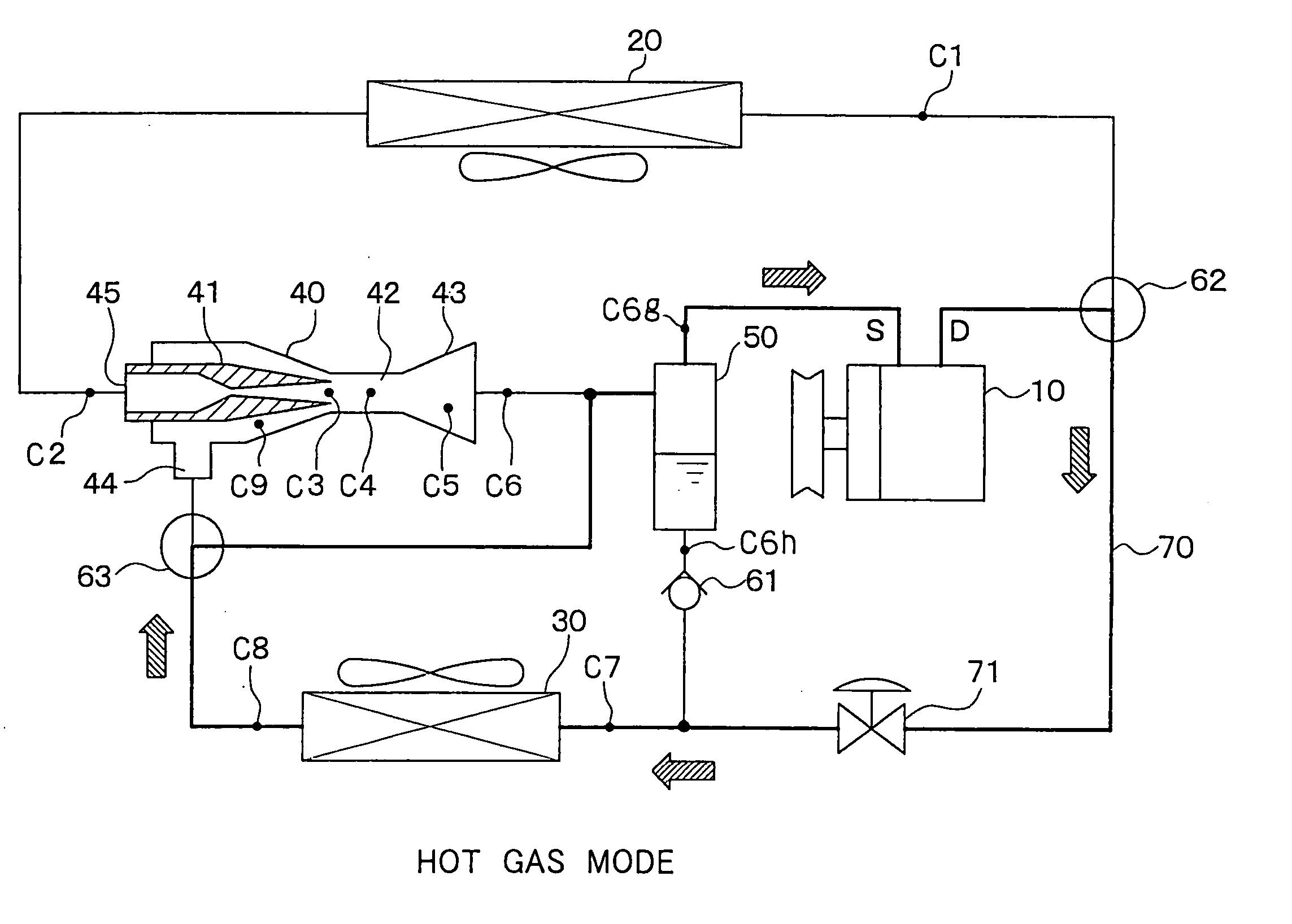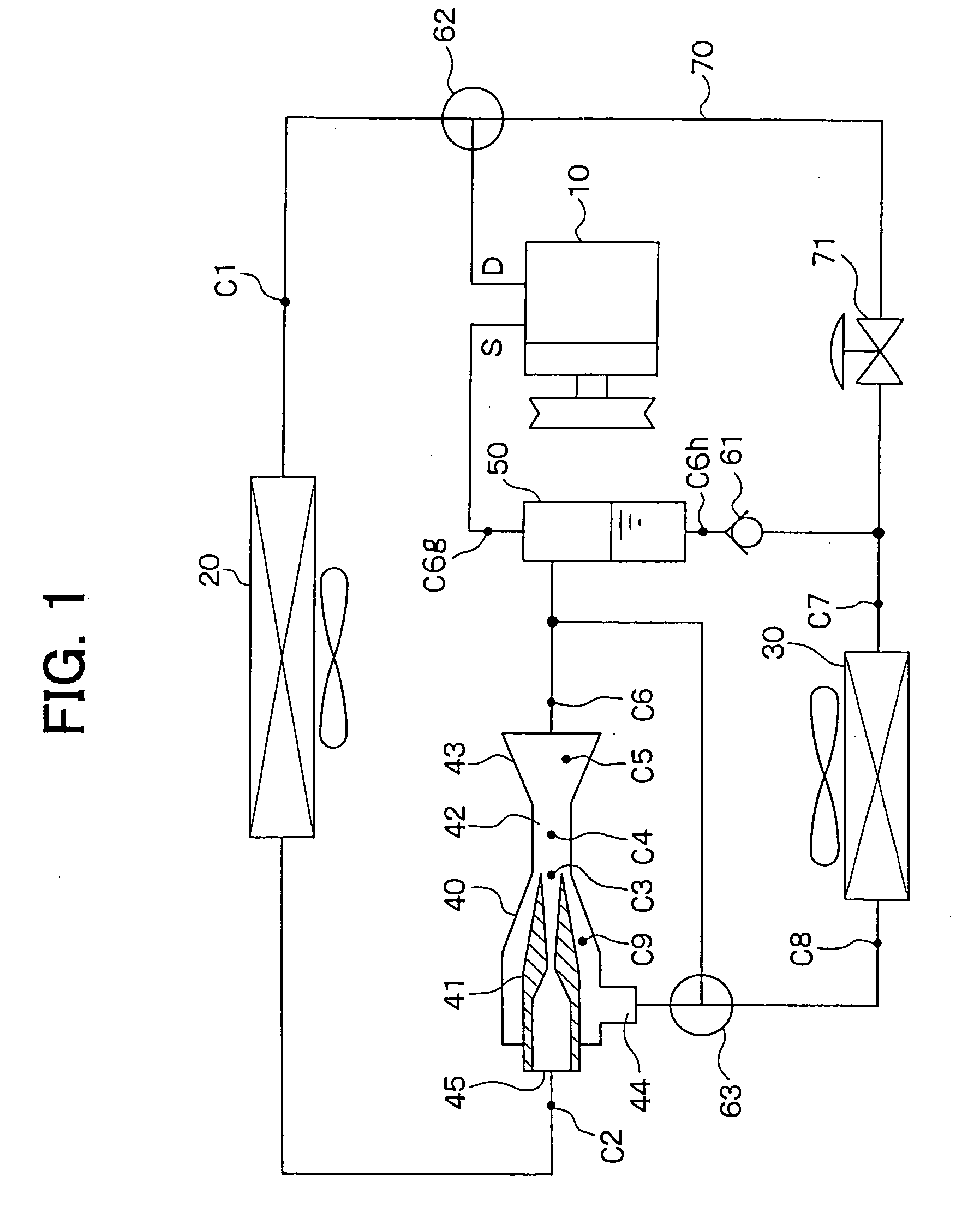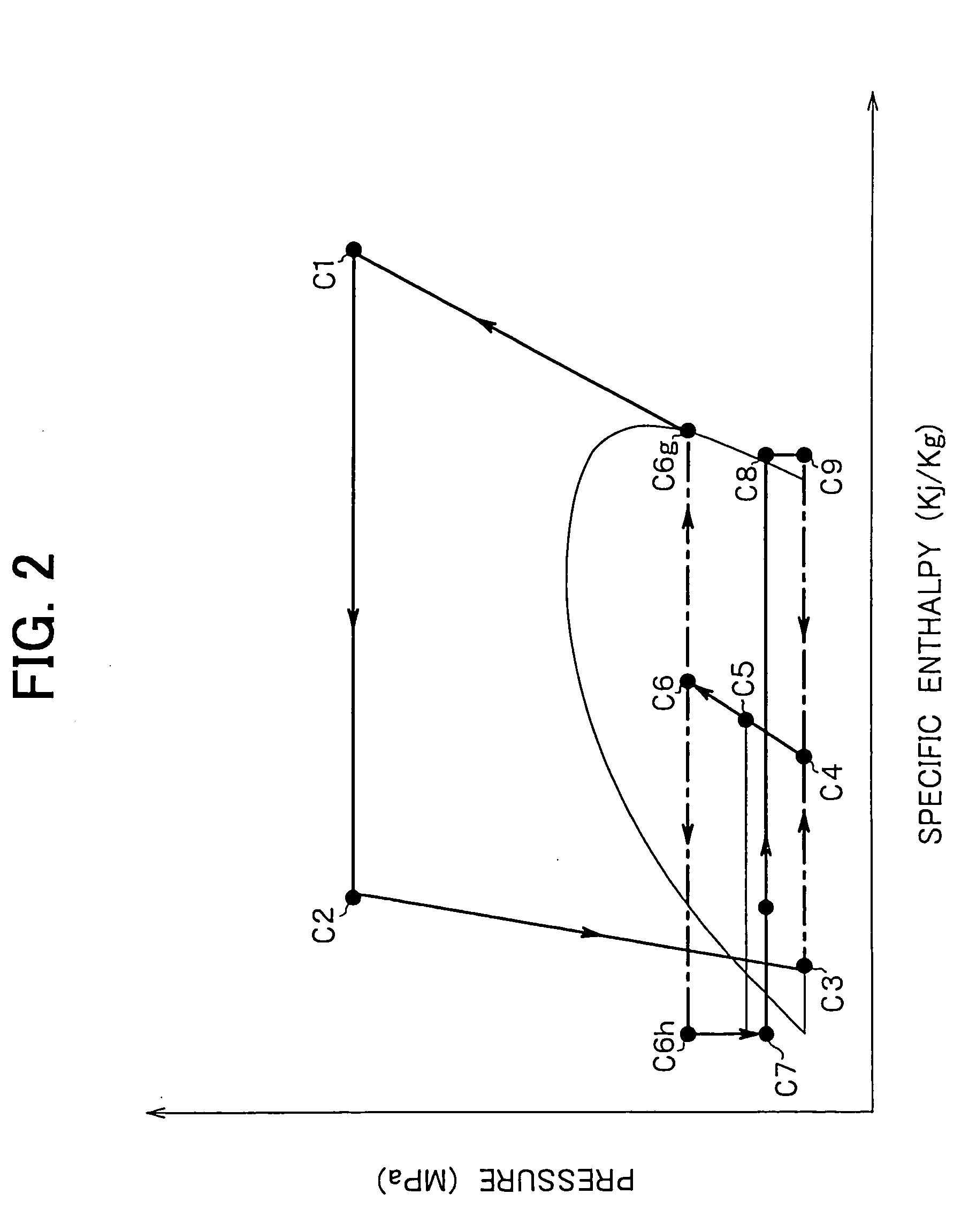Ejector cycle system
- Summary
- Abstract
- Description
- Claims
- Application Information
AI Technical Summary
Benefits of technology
Problems solved by technology
Method used
Image
Examples
first embodiment
[0024] The first embodiment will be described with reference to FIGS. 1-5. In the first embodiment, an ejector cycle system of the present invention is typically used for a vehicle air conditioner.
[0025] In the ejector cycle system of FIG. 1, a compressor 10 for sucking and compressing refrigerant is a continuously variable displacement compressor that is operated by motive power from a vehicle engine for running a vehicle, for example. However, the compressor 10 may be a fixed displacement compressor that is driven by an electric motor. An amount of refrigerant discharged from the compressor 10 is controlled so that air-conditioning capacity required in an interior heat exchanger 30 is controlled. Specifically, a cooling capacity required in a cooling mode and a heating capacity required in a hot gas heating mode can be controlled by controlling the amount of refrigerant discharged from the compressor 10.
[0026] An exterior heat exchanger 20 performs heat-exchange between outside ai...
second embodiment
[0039] In the above-described first embodiment, the refrigerant flow is switched by the first and second three-way valves 62, 63. However, in the second embodiment, as shown FIG. 6, the refrigerant flow is switched by two-way valves 62a, 62b, 63a. Specifically, in the cooling mode, the valve 62a is opened, the valve 62b is closed, and the valve 63a is closed. On the other hand, in the hot gas heating mode, the valve 62a is closed, the valve 62b is opened, and the valve 63a is opened. Therefore, in the hot gas heating mode, hot gas refrigerant discharged from the compressor 10 flows into the interior heat exchanger 30 through the bypass passage 70. In this case, refrigerant from the interior heat exchanger 30 flows into the gas-liquid separator 50 while bypassing at least the nozzle 41 of the ejector 40. That is, refrigerant flowing from the interior heat exchanger 30 can be introduced into the pressurization portion (i.e., the mixing portion 42 and the diffuser 43).
[0040] In the sec...
third embodiment
[0041] In the above-described first embodiment, refrigerant flowing out of the interior heat exchanger 30 is introduced to the gas-liquid separator 50 while bypassing the ejector 40 in the hot gas heating mode. However, in the third embodiment, as shown in FIG. 7, refrigerant flowing out of the interior heat exchanger 30 is introduced to the gas-liquid separator 50 through the ejector 40 in the hot gas heating mode. In the example of FIG. 7, the refrigerant flowing out of the interior heat exchanger 30 is introduced to both of the low-pressure refrigerant suction port 44 of the ejector 40 and the refrigerant inlet port 45 of the nozzle 41. However, the refrigerant flowing out of the interior heat exchanger 30 can be introduced to one of the low-pressure refrigerant suction port 44 and the refrigerant inlet port 45 in the hot gas heating mode. For example, all refrigerant from the interior heat exchanger 30 can be introduced to the refrigerant inlet port 45 of the nozzle 41 in the ho...
PUM
 Login to View More
Login to View More Abstract
Description
Claims
Application Information
 Login to View More
Login to View More - R&D
- Intellectual Property
- Life Sciences
- Materials
- Tech Scout
- Unparalleled Data Quality
- Higher Quality Content
- 60% Fewer Hallucinations
Browse by: Latest US Patents, China's latest patents, Technical Efficacy Thesaurus, Application Domain, Technology Topic, Popular Technical Reports.
© 2025 PatSnap. All rights reserved.Legal|Privacy policy|Modern Slavery Act Transparency Statement|Sitemap|About US| Contact US: help@patsnap.com



